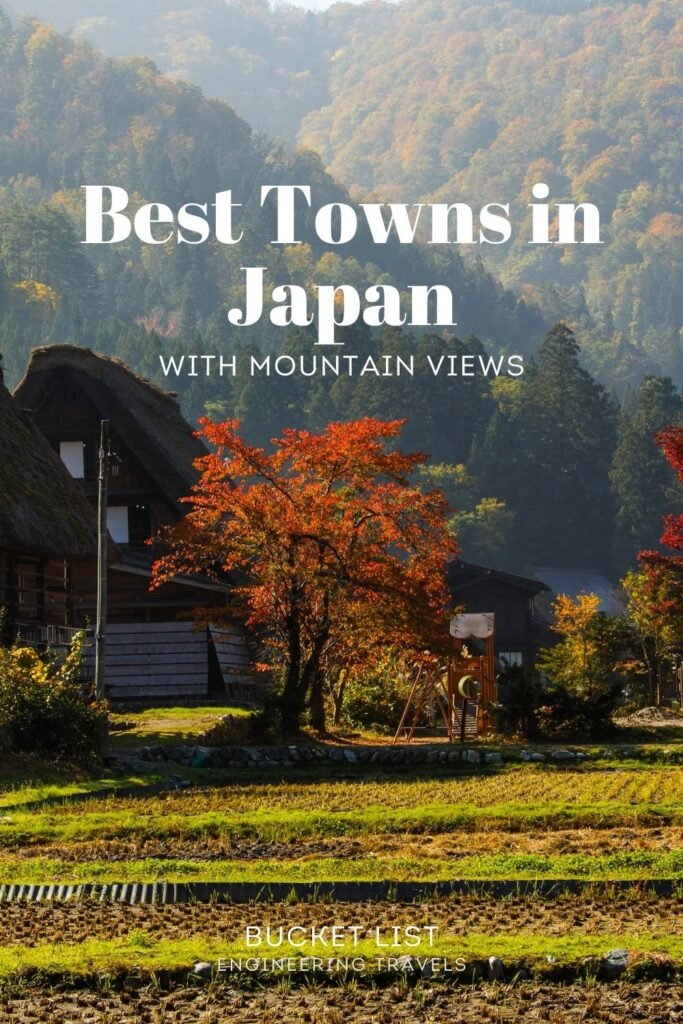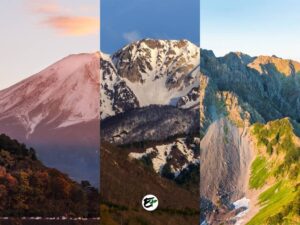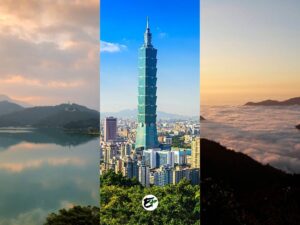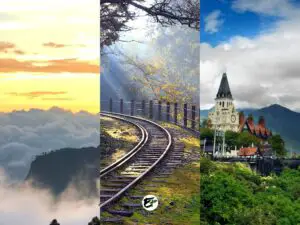Five Best Towns in Japan (Near Beautiful Mountains & Lakes)
Since I began working in a bustling metro, I’ve dreamed of visiting awe-inspiring places far from the stress of city life. I long to visit cities and towns where mountains touch the sky instead of buildings, and where natural scenery replaces streets choked with cars.
Japan offers plenty of such places. This beautiful country is home to numerous towns nestled near lakes and mountains, each offering a picturesque landscape. In this post, I will share my top five picks of such towns in Japan.
I have also included the optimal times for visiting and activities to do in these towns, providing you with immediate ideas. If you are currently planning a trip, I hope this information inspires you and assists in crafting your itinerary.
This post contains affiliate links. I may receive a tiny commission at no additional cost to you.
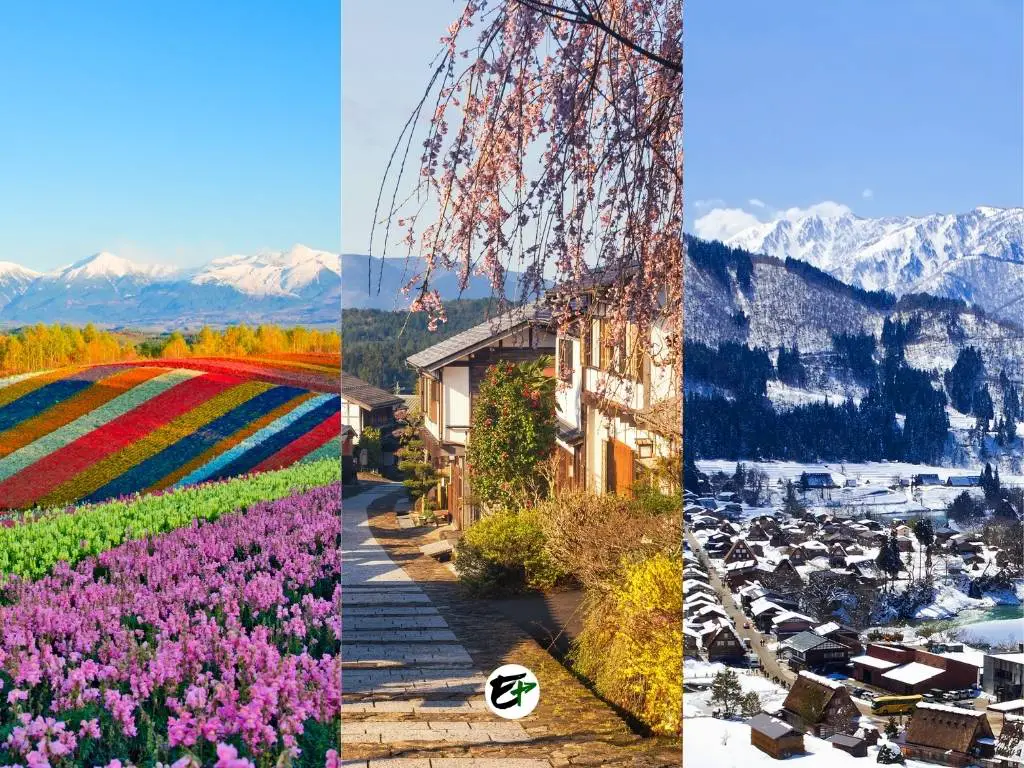
Use the table of contents to skip to topics.
Check out my other articles about Japan.
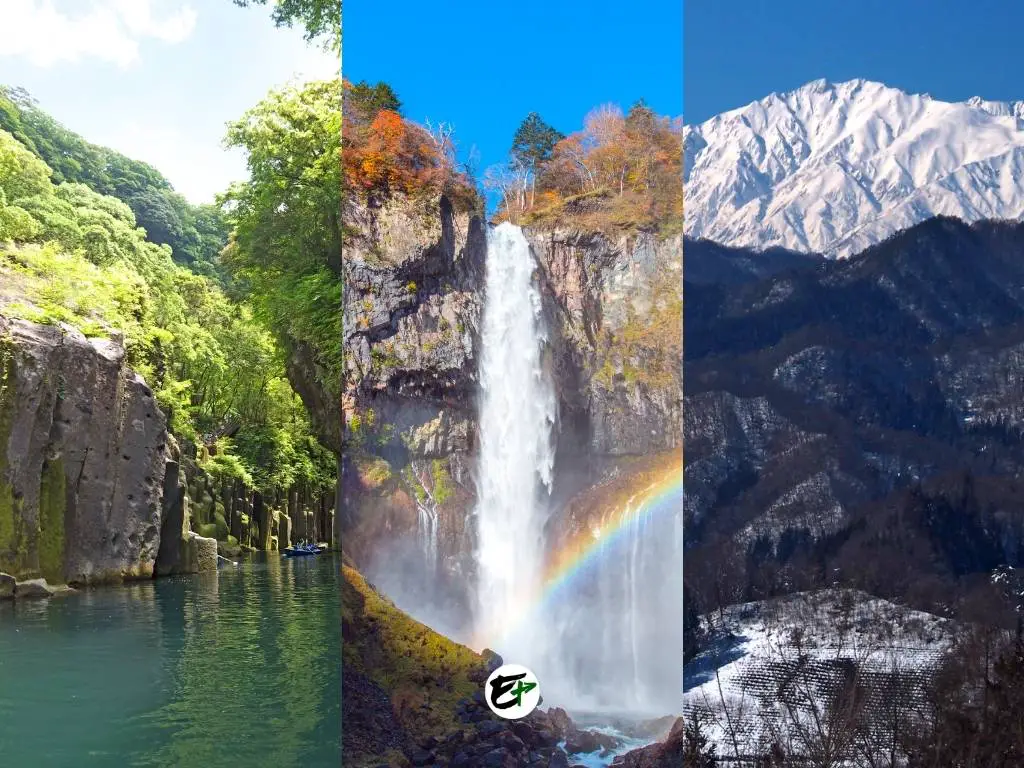
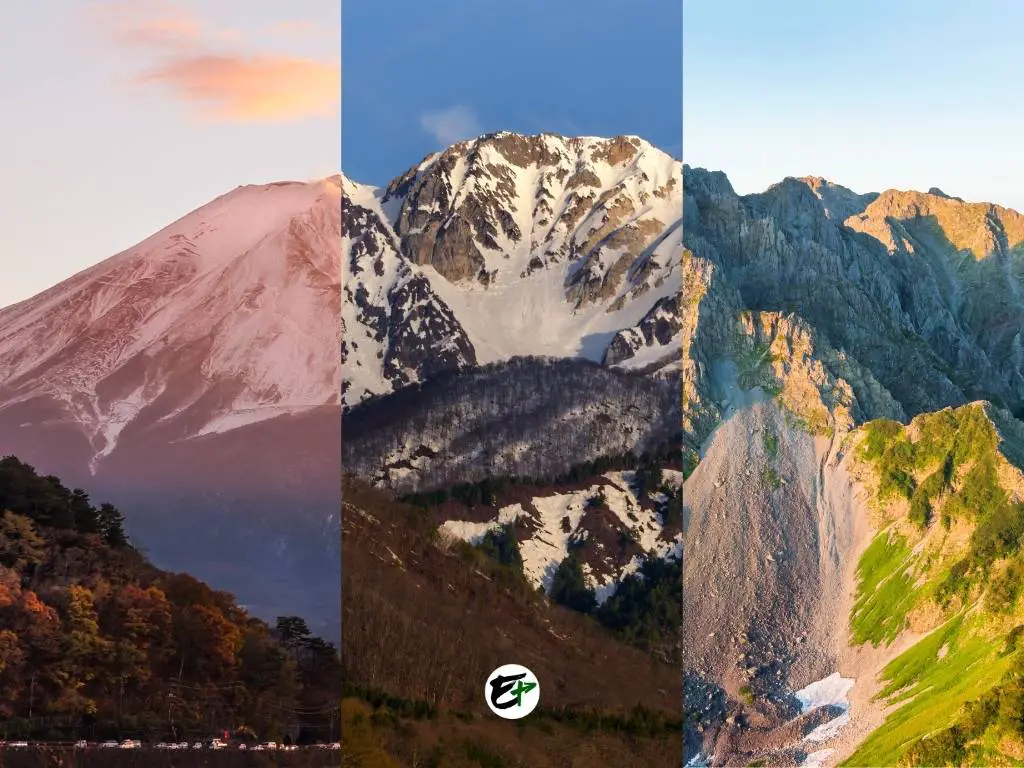
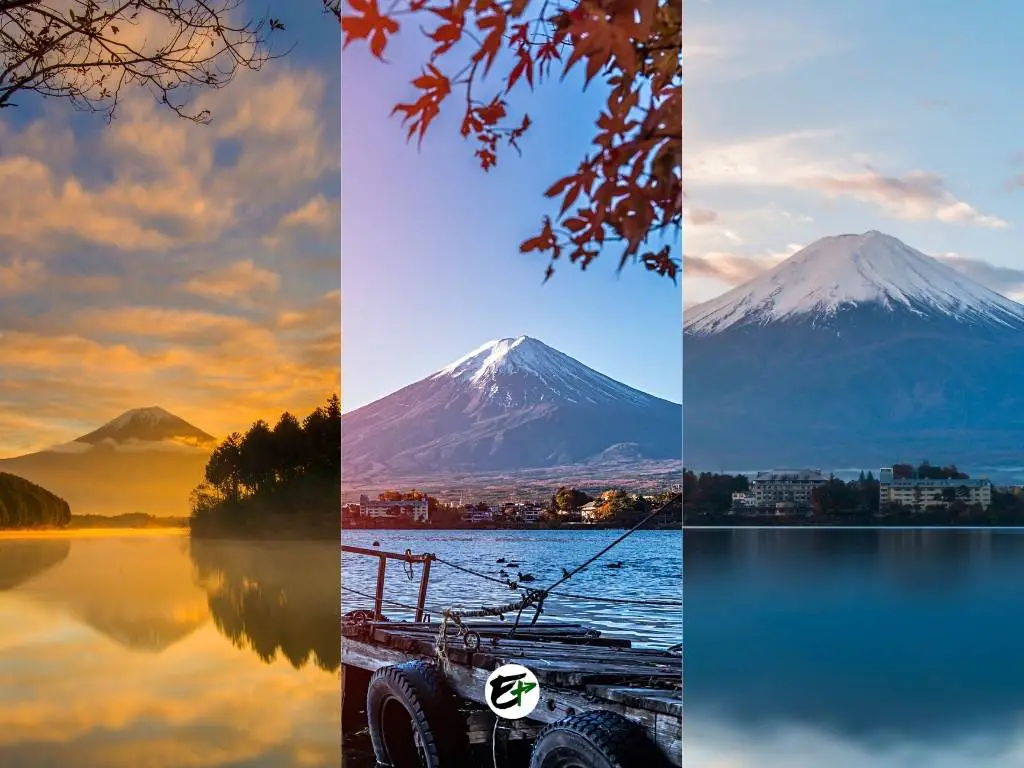
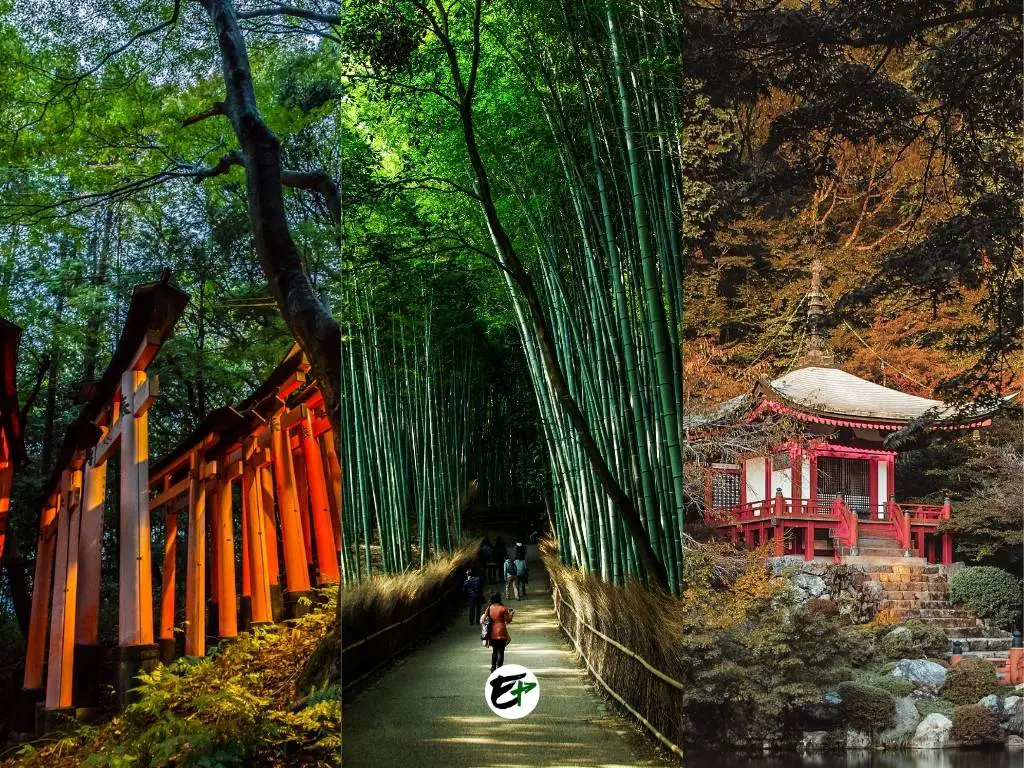
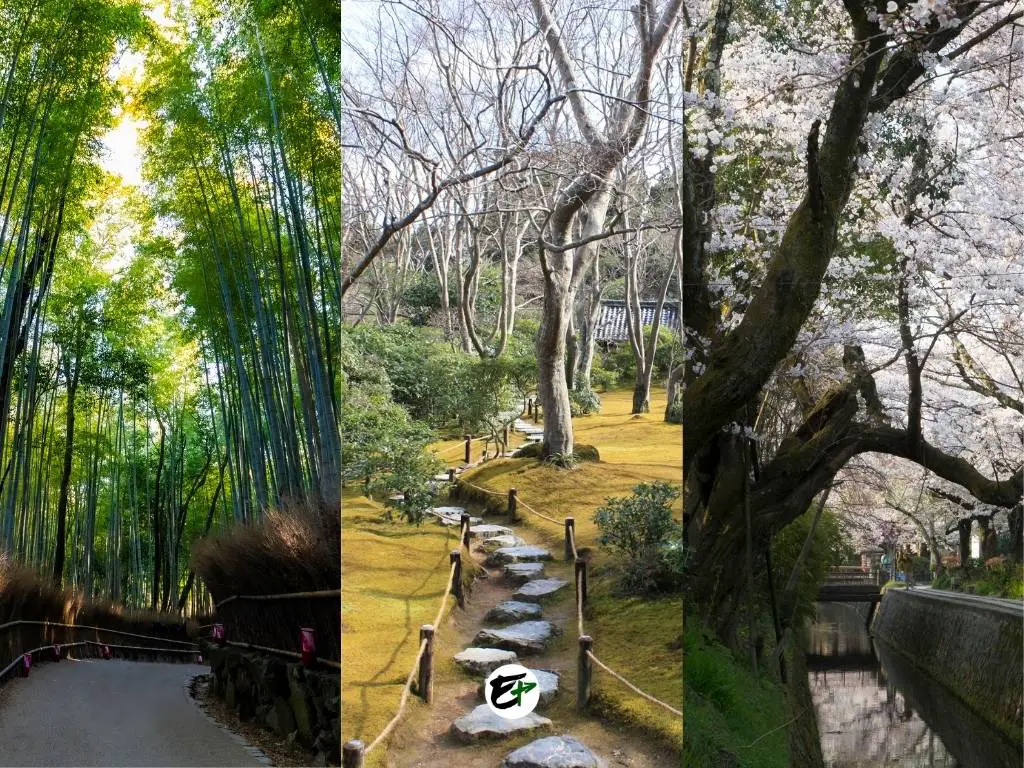

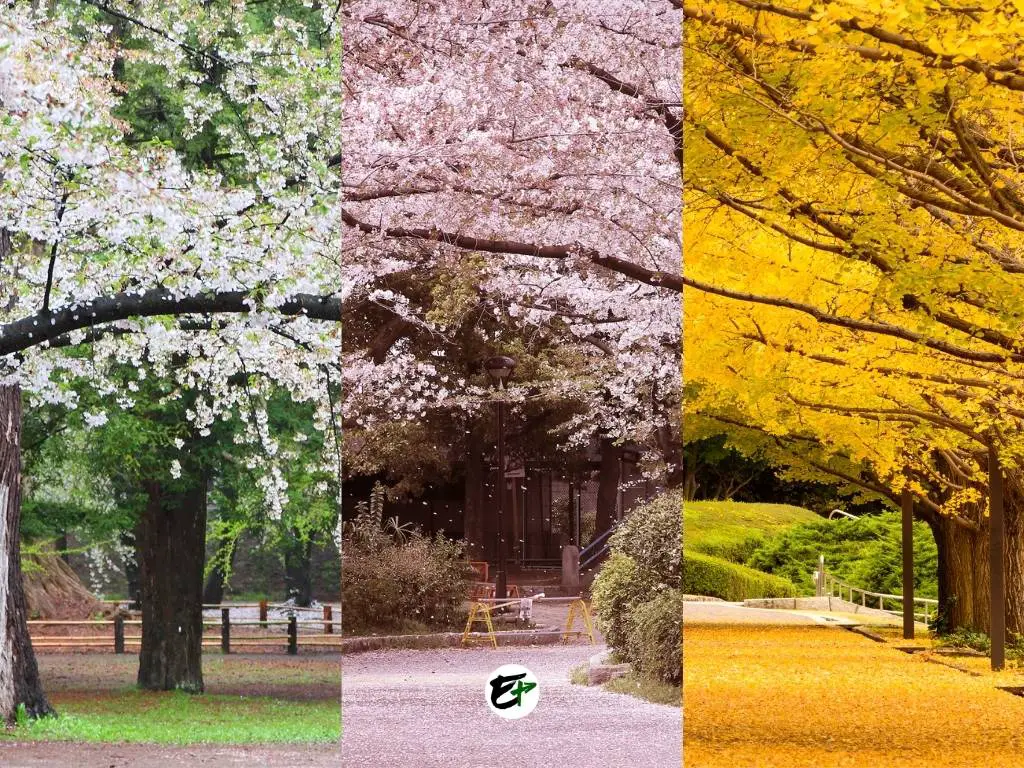
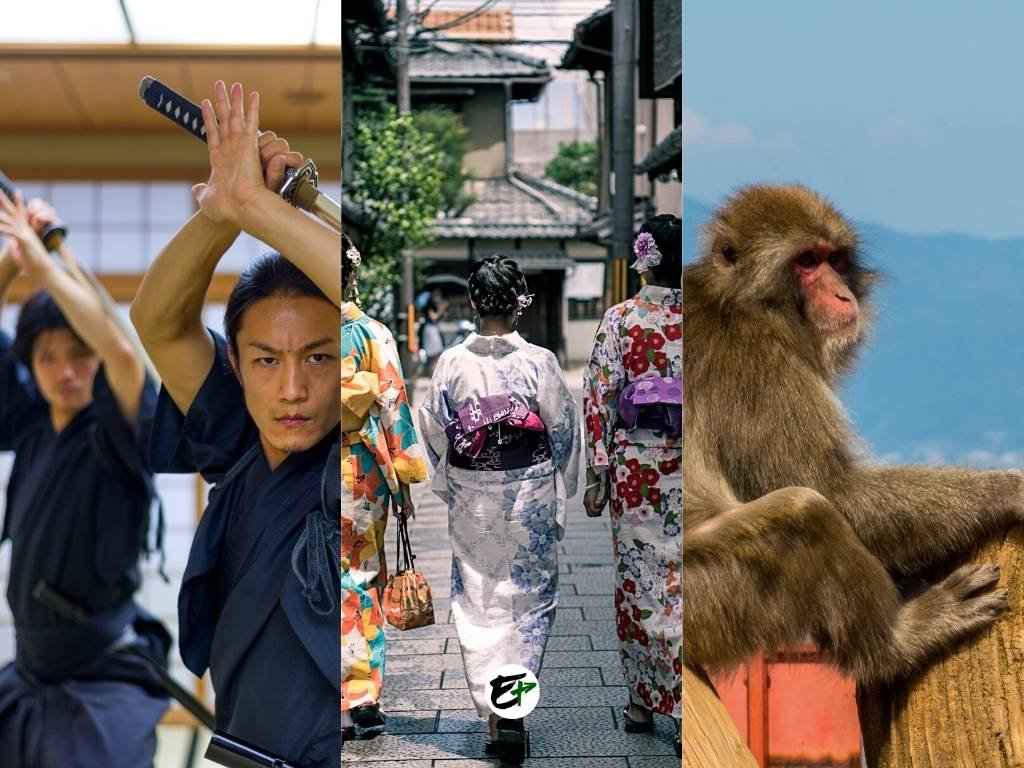
If you’re staying in Japan for several days, you can find the best hotel deals in this link.
I’ve organized the places based on their proximity to Tokyo, starting with the nearest. I chose this approach as it’s impossible for me to rank them from best to least. Each one is fantastic in its own right! So, without further ado!
1: Hakone
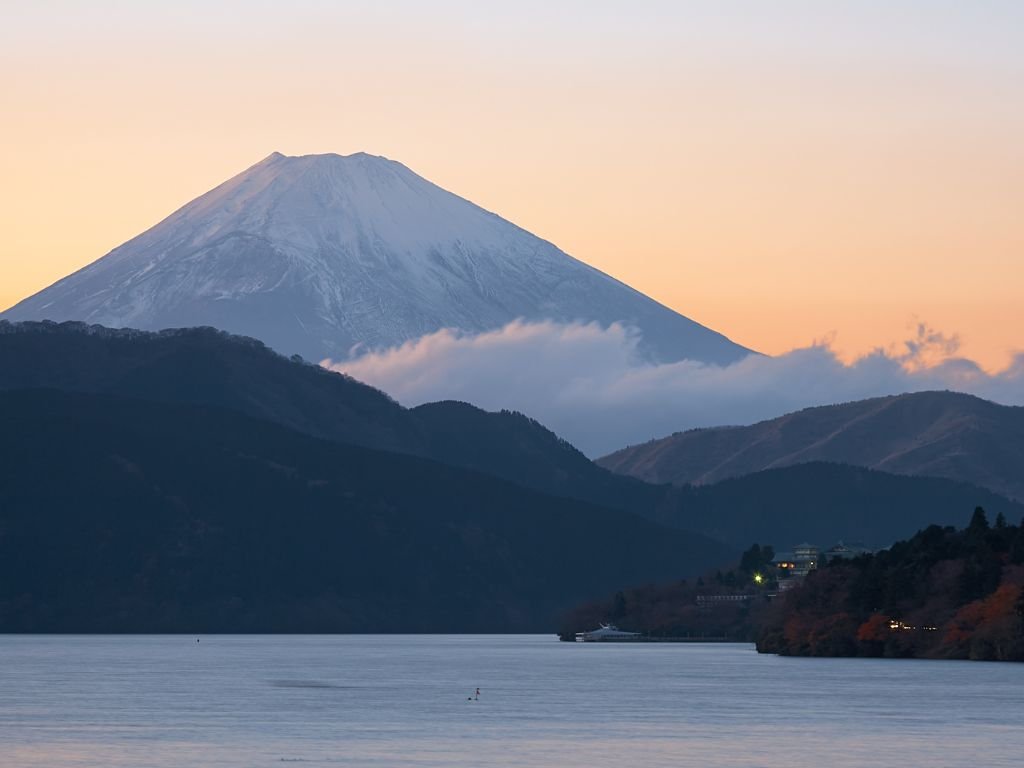
More Photos of Hakone
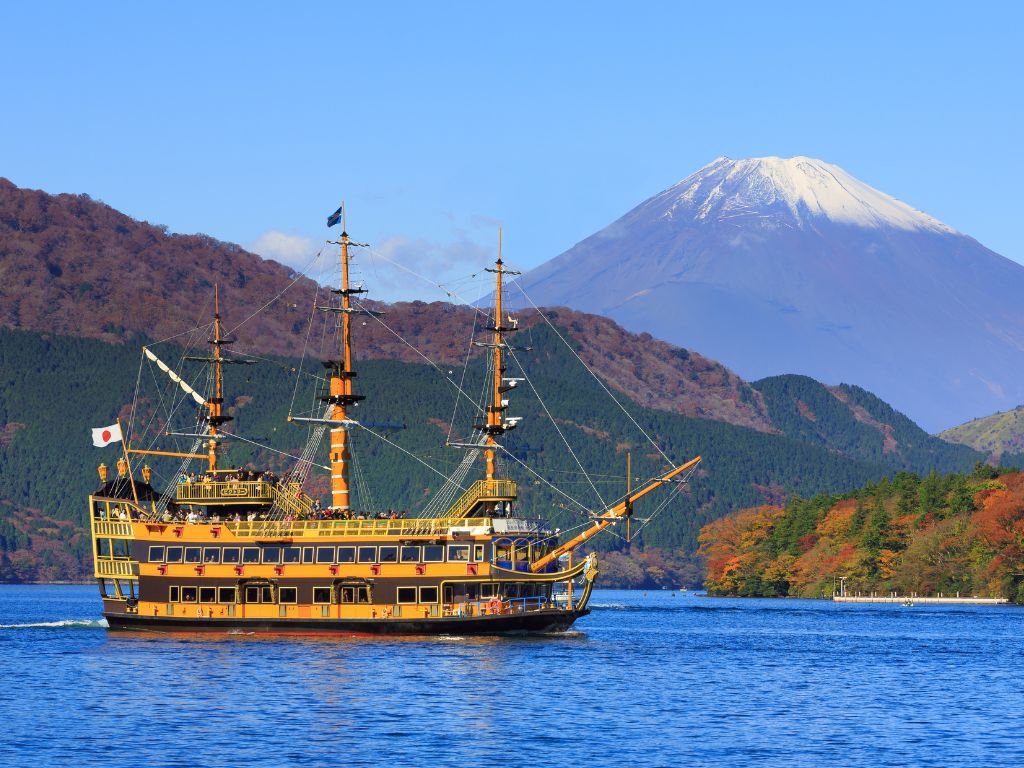
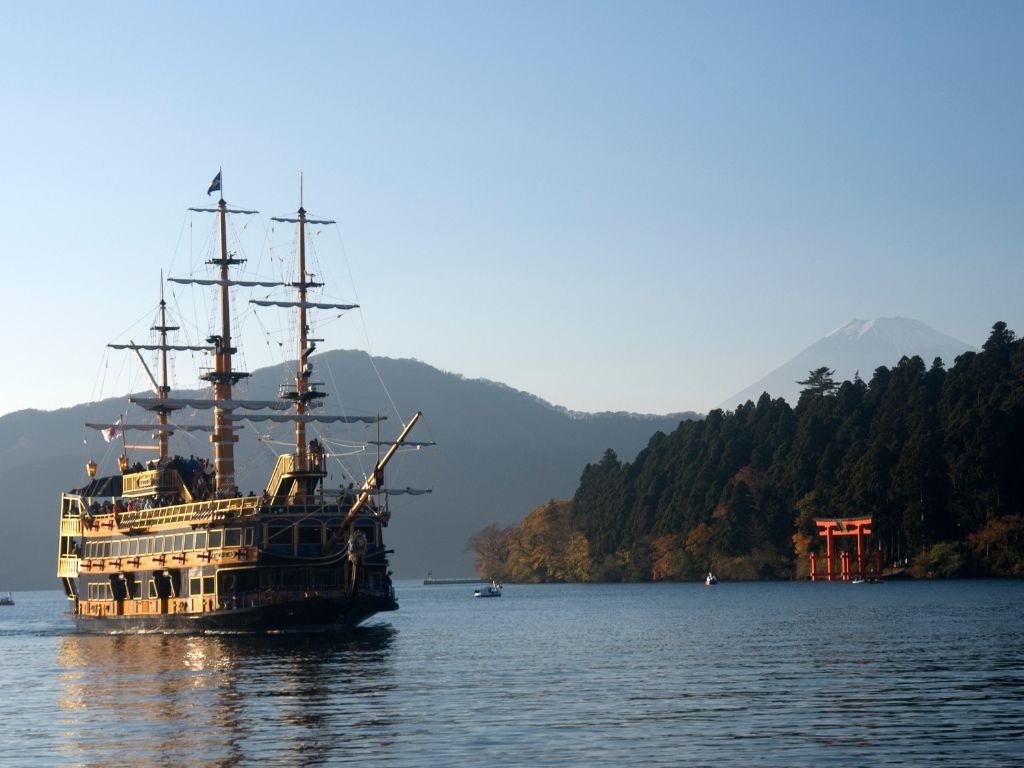

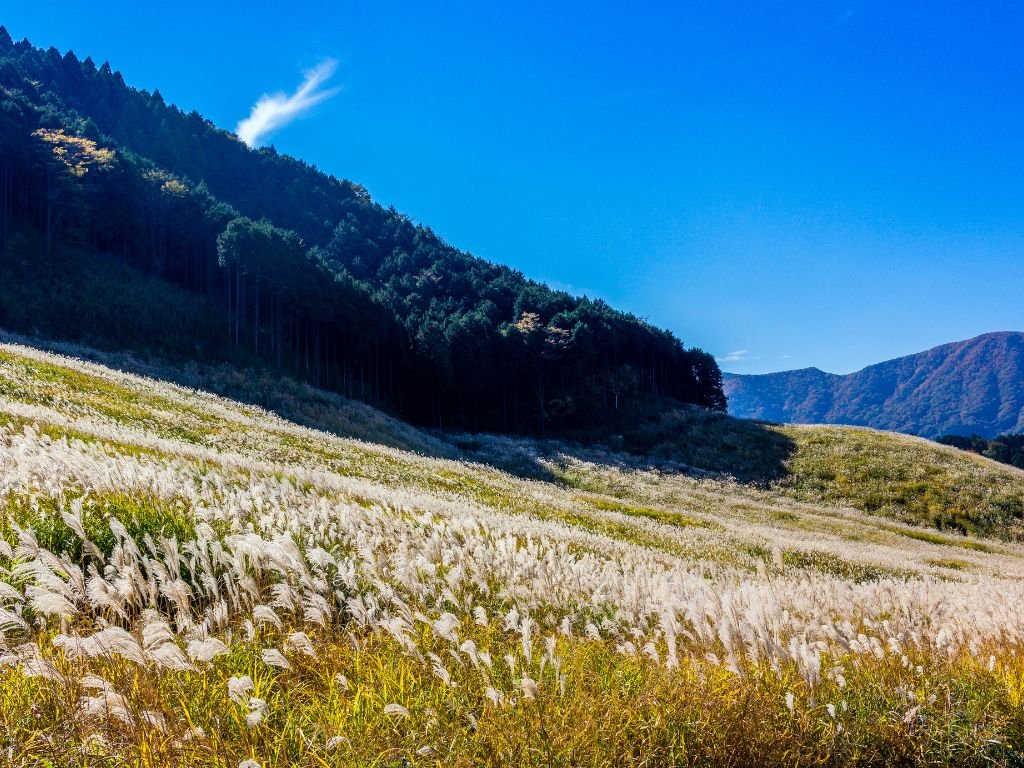
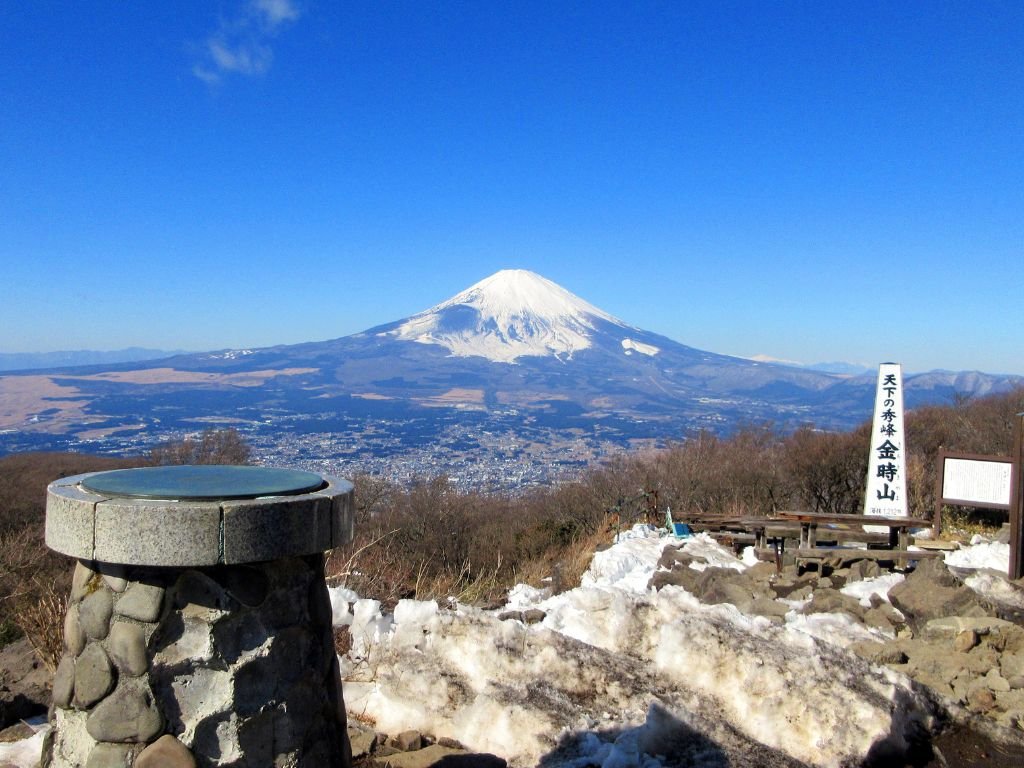
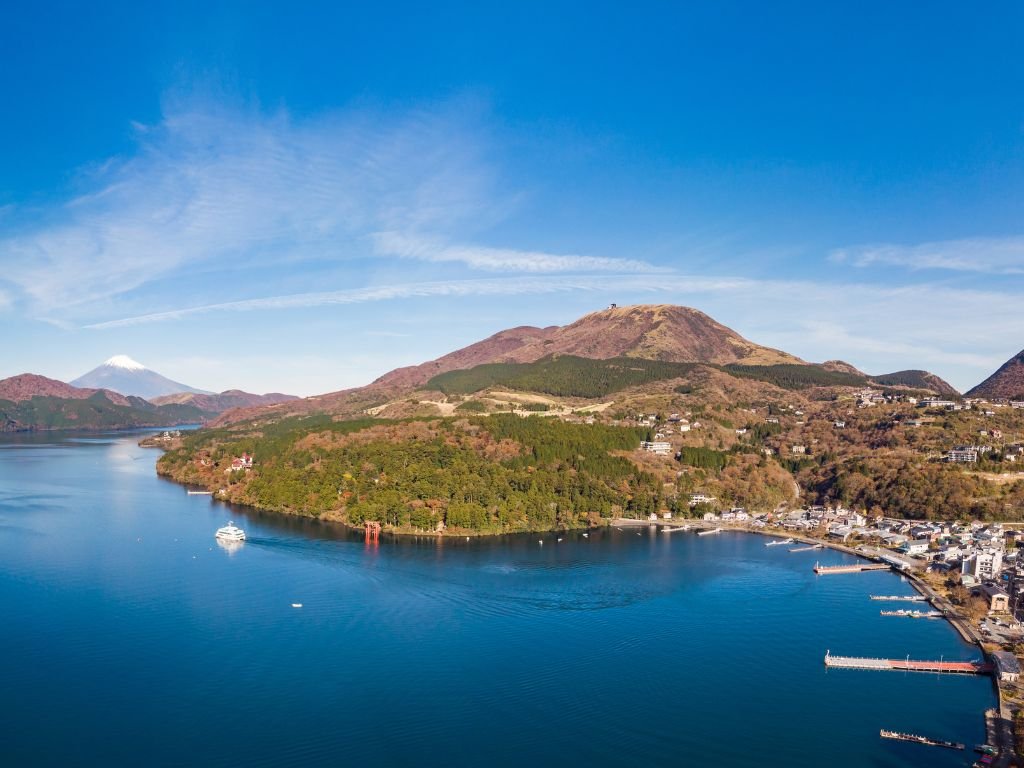

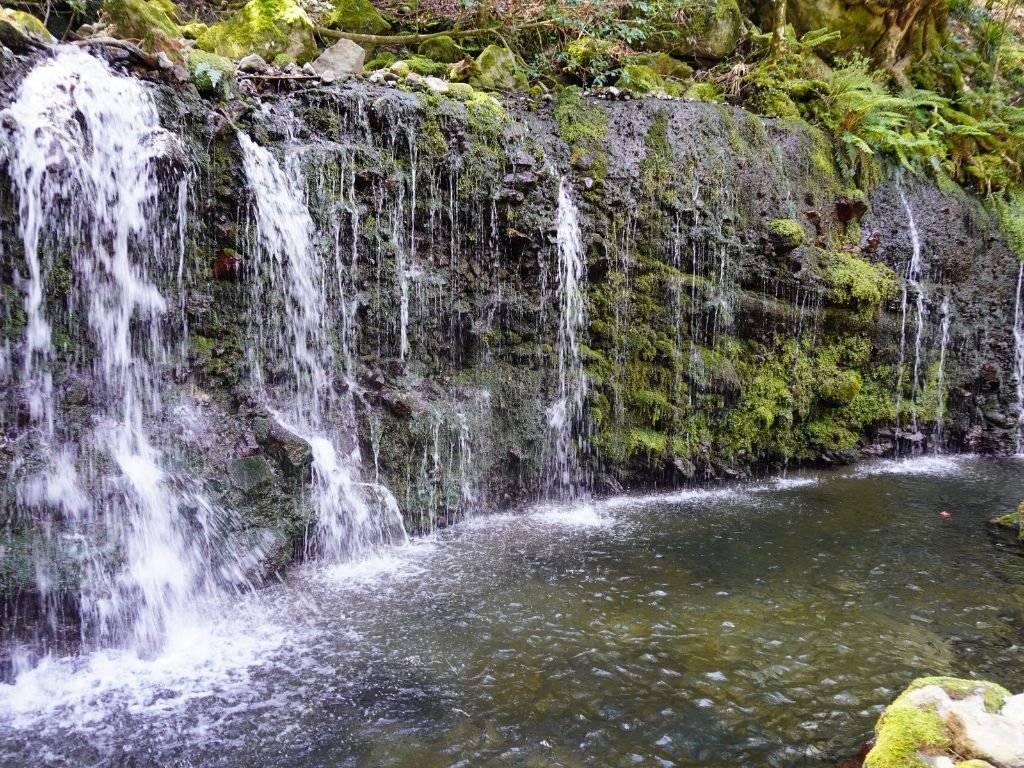
Just a short journey of one hour and forty-nine minutes south of Tokyo, you’ll find yourself at the intersection of culture, history, and natural beauty in Japan – the town of Hakone. Nestled in the Ashigarashimo District of Kanagawa Prefecture, Hakone is graced with the stunning vistas of Lake Ashi.
It’s one of the rare towns in Japan where you can enjoy a lake view with Mount Fuji in the backdrop, making it a popular destination throughout the year. But why visit Hakone?
Hakone is a mountain town situated on the westernmost edge of the prefecture, close to several peaks including Mount Hakone, Mount Mikuni, Mount Ashigara, and Mojingatake. With these mountains, Lake Ashi, and Mount Fuji, it’s hard not to fall in love with this place.
Moreover, Hakone is a treasure chest of experiences waiting to be discovered. It offers a wide range of attractions, from natural landscapes and cultural experiences to outdoor activities, traditional kimonos and rickshaws, golf, and museums.
More things to do in Hakone
- Hakone, known for its hot springs, owes its reputation to its geographical location. Sitting atop an ancient volcano, it’s home to numerous hot springs. In the upper highlands, you’ll find milky white onsens beneficial for your skin. For quick skin recovery, try the onsens at the foot of the mountains, known for their high alkaline levels.
- Next, visit the Sengokuhara pampas Grass Fields, recognized as one of the “Best 50 scenic spots in Kanagawa” and “Best 100 spots for sightseeing flowers in Kanagawa”. It offers stunning views and plenty of fresh air.
- Don’t miss Owakudani. Take a cable car ride to see the steaming thermal volcanic vents amidst the mountains. The cable car also provides a view of Mount Fuji from Hakone, offering breathtaking views of the towns and landscapes.
- Lake Ashi is a highlight of Hakone. Spot the beautiful pirate ship sailing on the lake, a moment worth capturing, especially with Mount Fuji in the background. You can also try fishing or rent a kayak.
- If you love high-altitude places, take a ride on the Komagate Ropeway. It takes you to Hakone’s highest peak, where you can see Mount Fuji and even the Pacific Ocean.
- Visit the Hakone Shrine, a place of worship over 1000 years old. People come here seeking blessings for health, marriage, and other fulfilling moments.
- Take a boat cruise for pleasant sightseeing around the lake. The ride offers a better opportunity to see Mount Fuji.
- For adventure seekers, try the Forest Adventure. It’s a structured activity spot in the woods of Hakone, offering zipline rides and rock climbing.
- A 15-minute uphill walk from Kowakien Station on the Hakone Tozan Train line will lead you to the refreshing Chisuji waterfall.
- Hike Mount Kintoki to see Mount Fuji from a different perspective and observe the geological evidence of Hakone’s volcanic landscape.
- If you have time and resources, play golf in Hakone. There are four golf courses: Sengoku, Daihakone, Hanone-en, and Yunohana Golf Course.
- Experience Zazen Meditation at Jyosen-Ji Temple in Miyanoshita. It’s a chance to find inner peace and relaxation.
Hakone is home to many museums:
- The Venetian Glass Museum in Sengokuhara specializes in Venetian glasses.
- The POLA museum, an art gallery in Gora village, showcases impressionist and western art, including works by Monet, Chagall, Manet, and Renoir.
- The Narukawa Art Museum has a great collection of Nihonga, contemporary Japanese paintings rooted in classical Japanese art techniques from the Heian Era. It also offers a great view of Lake Ashi and the surrounding mountains.
- If you’re interested in geology, visit the Hakone Geo Museum to learn about the origin of Hakone’s hot springs.
When to visit Hakone
Hakone is nice to visit at any time of the year. However, I would recommend considering a trip during the autumn season. This is when the fall foliage transforms the town and surrounding mountains into a vibrant canvas of golden hues. It’s important to remember that Hakone is a favored destination among tourists. As such, it tends to get quite crowded during the weekends.
Planning to stay in Hakone? Find the perfect hotel for you here.
2. Tateyama

More pictures of Tateyama

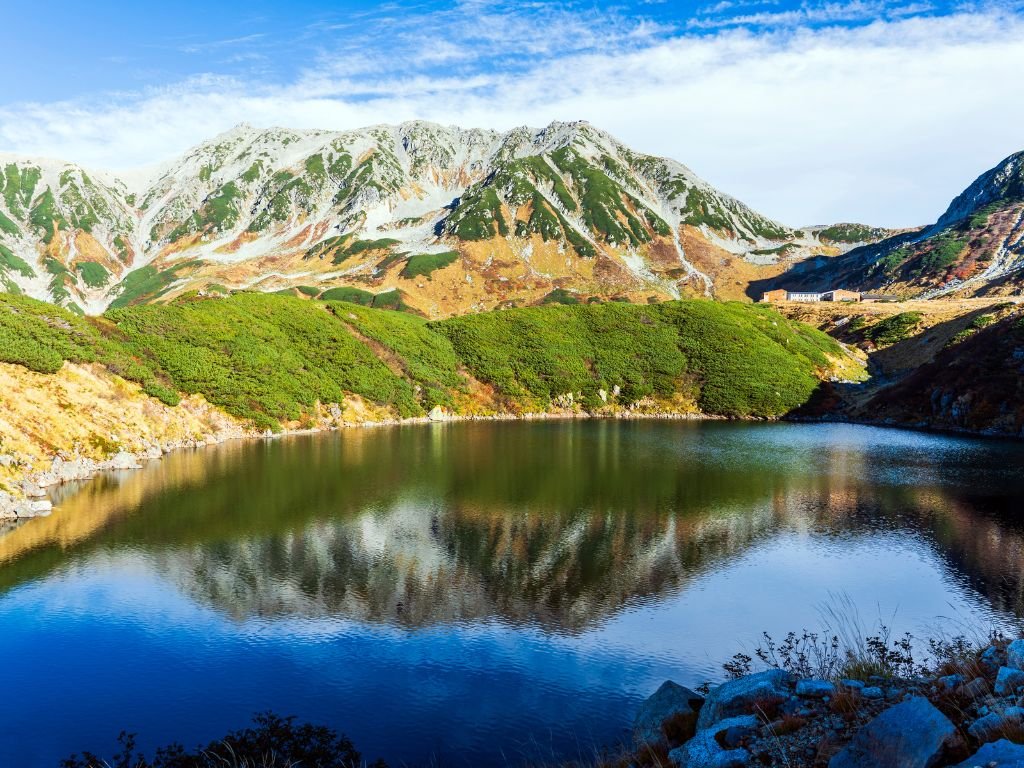


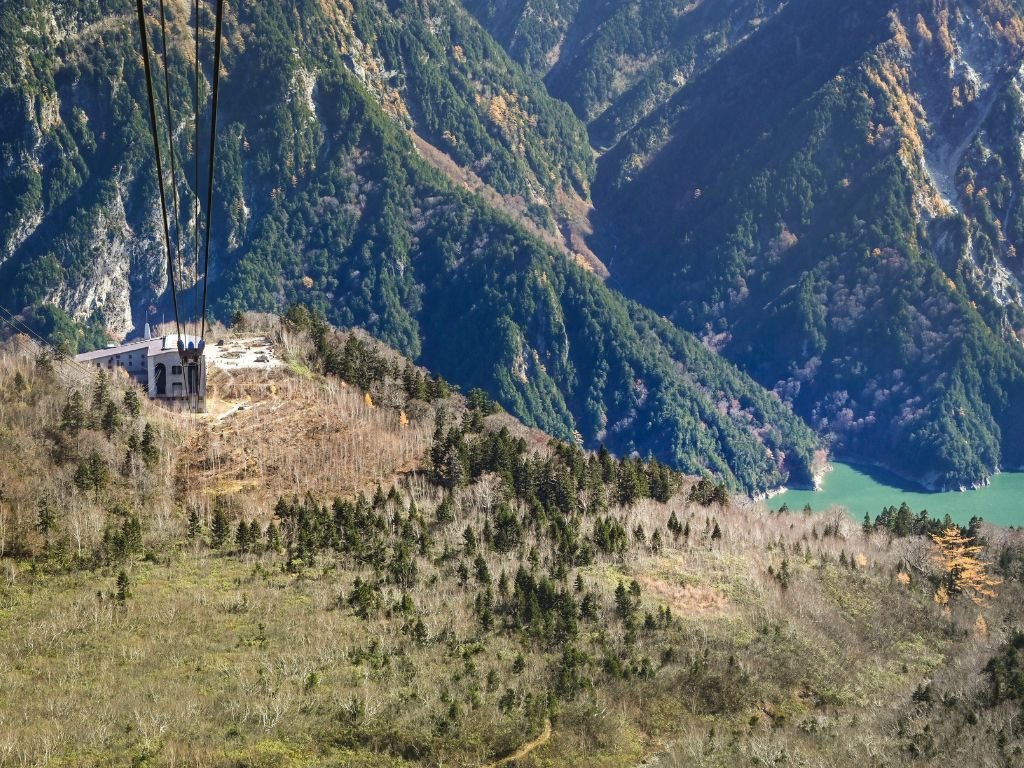

When I first saw Tateyama, I thought I was looking at a scene from Europe or Canada. The view of the mountains from this town is simply incredible! Located in the Nakaniikawa District of Toyama Prefecture, Tateyama Town is approximately 2 hours and 45 minutes from Tokyo via the fastest route.
Tateyama Town is nestled in the Tateyama Mountain Range, which is made up of three peaks: Onanjiyama, Oyama, and Fuji-no-Oritateyama. These peaks collectively provide a magnificent view, particularly during clear weather.
So, why should you visit Tateyama? Well, merely sightseeing the mountains from their base is just the beginning. The town serves as a gateway to the wonders that await us in the mountains. In fact, Tateyama Town itself offers a plethora of activities!
With the multitude of activities available here, it could take up to two weeks to experience them all! These include hiking, chasing waterfalls, visiting shrines, learning how to create posts, interacting with Japanese rhinoceros beetles and fireflies, and so much more! However, the real draw of Tateyama is the Tateyama Kurobe Alpine Route, which begins right here in Tateyama Town.
More Information: Tateyama Kurobe Alpine Route
The Tateyama Kurobe Alpine Route offers a unique and spectacular journey through the Northern Japan Alps. This route is traversed by various means of transportation, including cable cars, electric buses, and a ropeway.
It serves as a connector between Toyama City in Toyama Prefecture and Omachi Town in Nagano Prefecture. The route offers travelers the opportunity to witness the magnificent scenery of the Tateyama Mountain Range, which forms part of the Chubu Sangaku National Park.
Attractions along the Alpine Route
- The “Yuki-no-Otani” snow wall — a sight to see. From April 16 onwards, the route opens to the public with the snow cleared from the road. Given that Tateyama is one of the places in the world with the heaviest snowfall, the result of the snow removal is a towering snow wall, standing 15 to 20 meters high. Visitors can stroll through this man-made snow canyon and marvel at its firm structure.
- Another attraction at this site is “Hell Valley”, where you can witness volcanic activities like steaming volcanic gas emerging from the ground.
- Visit Mikuriga-Ike Pond for a picturesque scene of a volcanic lake that mirrors the peaks of the mountain ranges.
- Marvel at Mount Tsurugidake, also known as Mountain Sword due to its shape, is home to the last existing glaciers in Japan.
- As you traverse the route, you’ll get a chance to see and approach the summit of Mount Tateyama. The peak is adorned with shrines and Toriis, attracting worshippers. A hike up the mountain on a clear day offers a view of Mount Fuji.
- The Tateyama ropeway offers an unforgettable ride on Japan’s longest one-span ropeway. From here, you can enjoy stunning views of Kurobe-ko Lake and Ushiro Tateyama Mountain.
- Witness the Kurobe Dam, a remarkable project of the 20th century. It’s the world’s largest arch-type dome and stands as the highest in the world.
- Visit the Midagahara Highlands to see a dramatic view of the eye-pleasing mountainous forested hills, which transform into a colorful landscape every autumn.
- Go to Syomyo Falls and Hannoki Falls. They are the two highest waterfalls in Japan, standing at heights of 350 meters and 500 meters, respectively.
- Lastly, the Akushiro wall — the largest monolith in Japan, it extends more than 8 kilometers in length. The difference in height between its top edge and foot is 500 meters.
More things to do in Tateyama
- If you’re visiting during the spring season, make sure to see the cherry blossoms in Jouganji-Gawa Park. It’s considered one of the best spots for cherry blossom viewing in Tateyama.
- Immerse yourself in the local culture at the Tateyama Town Buried Cultural Property Center. Here, you can view pictorial diagrams, artifacts, models of relics, and excavated remains from Tateyama Town.
- Experience the power of nature at Iwamuro-no-Taki Falls. Listen to the roar of the water as it crashes into the rocky plunge pool in the heart of the forest. Recognized as one of Toyama’s national treasures, it may hold undiscovered secrets.
- Take in the landscape of Tateyama at Daikanbo Nature Park. Situated 325 meters above sea level, it provides an excellent vantage point to observe the changing landscape of Toyama Prefecture, from Alpine mountains to plains and shores.
- For a panoramic view of Tateyama, visit Toyama’s wide-area Clean Center Observation Deck. Rising 80 meters above the ground, the observatory offers clear views of the town’s scenery and the transitioning landscape of Toyama Prefecture.
- At Konchu Okoku (Insect Kingdom) Tateyama Tateyama Shizen Fureai Kan, you can participate in an Insect Friendship Class. This unique experience allows you to learn about Japanese rhinoceros beetles, dragonflies, and fireflies.
- Visit Tounoukan for another unique activity. Here, you can learn how Etchu Setoyaki (Etchu pottery) is made through art classes guided by a professional ceramicist.
- Finally, explore and relax in Green Park Yoshimine. Wander through the forest, spot natural hot springs, and commune with nature. It’s a two-in-one destination where enjoyment and relaxation go hand in hand.
Best Time to Visit Tateyama
The ideal time to visit Tateyama Town coincides with the “Yuki-no-Otani” event, when the impressive snow walls are formed. This period also marks the opening of the Tateyama Kurobe Alpine Route. Typically, this occurs in early spring, spanning from mid-April to May. As winter approaches, starting from mid-November, the Alpine Route closes once again.
Spending days in Tateyama? See the best hotel deals here.
3. Magome
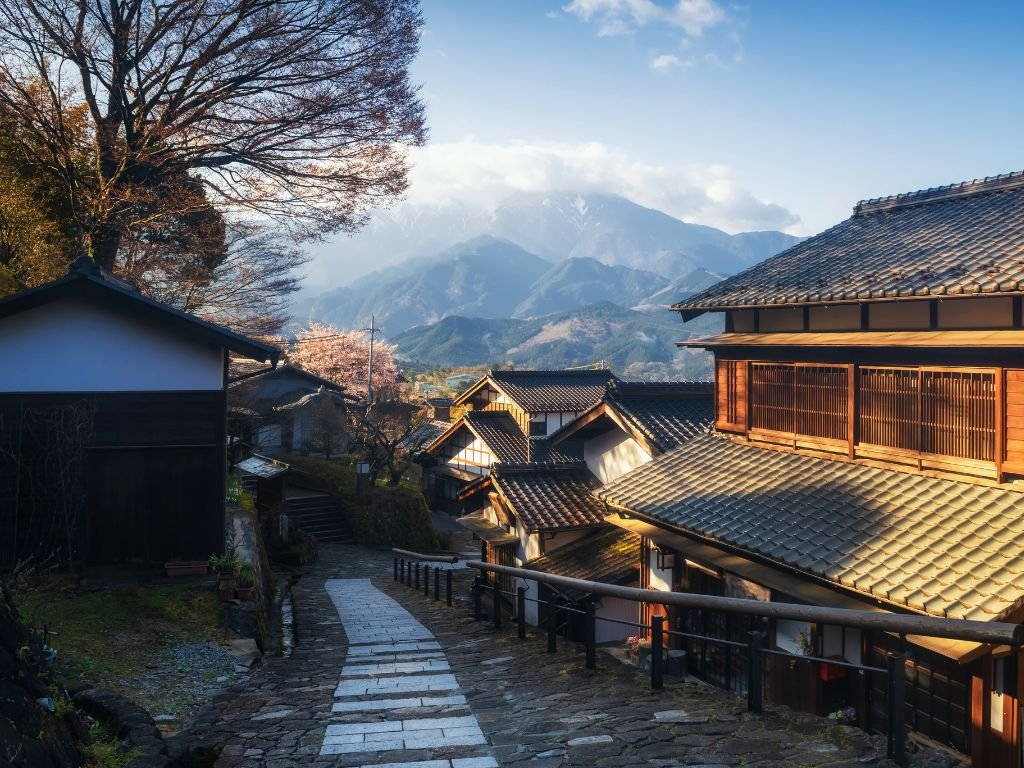
More Photos of Magome

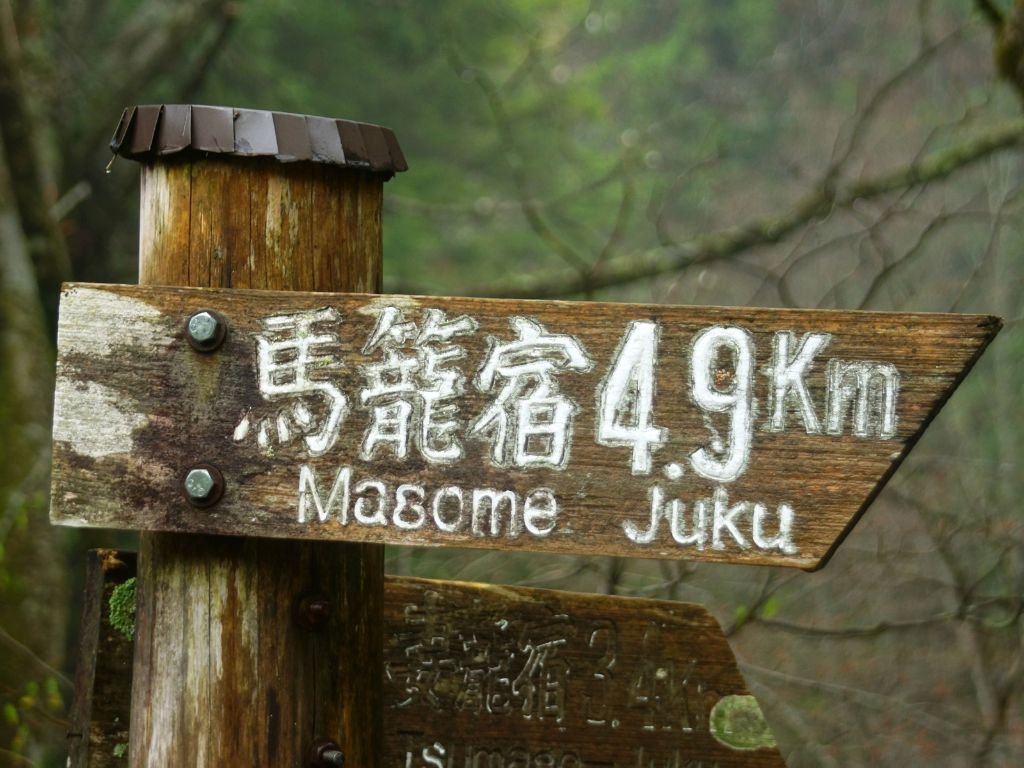
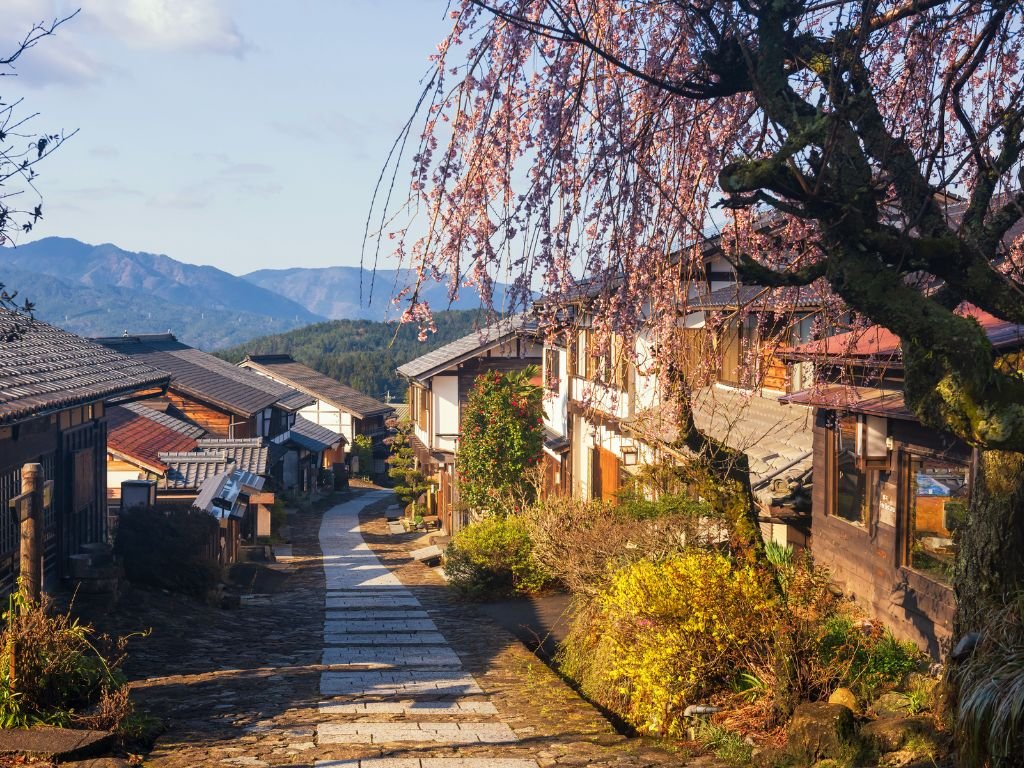
In approximately three hours and fifty-two minutes, one can travel from Tokyo to Magome. Once known as a “post town,” Magome was established to accommodate travelers along major highways. The route that Magome served is Nakasendo, a path that connects Kyoto and Tokyo.
Magome is one of the remaining post towns along Nakasendo and is one of the last of the 11 stations in the Kiso Valley. From here, visitors can enjoy a scenic view of Mount Ena, a mountain that stands at a height of 2190 meters.
Today, Magome is part of the Nakatsugawa district in Gifu Prefecture. A visit to Magome feels like stepping back in time. The cobblestones, houses, and wooden watchtower all contribute to its beautiful, nostalgic ambiance.
Undeniably, Magome is a paradise for photographers. The picturesque setting is sure to keep photography enthusiasts’ fingers busy on the shutter. Even if you’re not a photographer, you’ll likely find yourself sharing numerous photos and stories about this place on social media.
While Magome may offer fewer activities and less dramatic scenery than Tateyama and Hakone, it nonetheless stands out as a remarkable destination for those seeking a relaxing journey. It’s a cozy place for those looking to heal and move forward. But, of course, this is just my humble opinion.
Things to do in Magome
While Magome may be a small town, it still offers a handful of worthwhile activities that are worth exploring:
- Capture the beauty of Magome through your lens. This picturesque town is a delight for photography enthusiasts. However, it’s important to remember that some of the houses in Magome are private properties, not exhibits, and we should respect the residents’ privacy.
- Pay a visit to the Toson Memorial Museum and Tsuchimaya Shiryokan. Here, you can explore the famous works of Shimazaki Toson, a renowned writer who was born in Magome.
- Immerse yourself in the history of Magome at the Wakihonjin Museum. This museum showcases displays that depict the history of this old Nakasendo post town.
- Stop by the Shimizuya Shiryokan. This small museum exhibits various belongings of Magome’s citizens, including scrolls, clothing items, and pottery.
- Embark on an exploration of the old Nakasendo. The Magome-Tsumago Trail, a part of Nakasendo, offers impressive scenery, including scenic mountains and valley vistas. Along the way, you’ll encounter waterwheels, the Otaki and Metaki Falls, and various shrines.
Best time to visit Magome
Summer is the ideal time to visit Magome, thanks to the dry and sunny weather. However, winter visits are not highly recommended as snow can render some paths inaccessible.
Like any popular tourist destination, Magome can get quite crowded, particularly on holidays and weekends. The influx of tourists can make it challenging to capture those perfect “Instagrammable” moments. So, plan your visit accordingly to make the most of your experience!
4. Shirakawa

More photos of Shirakawa
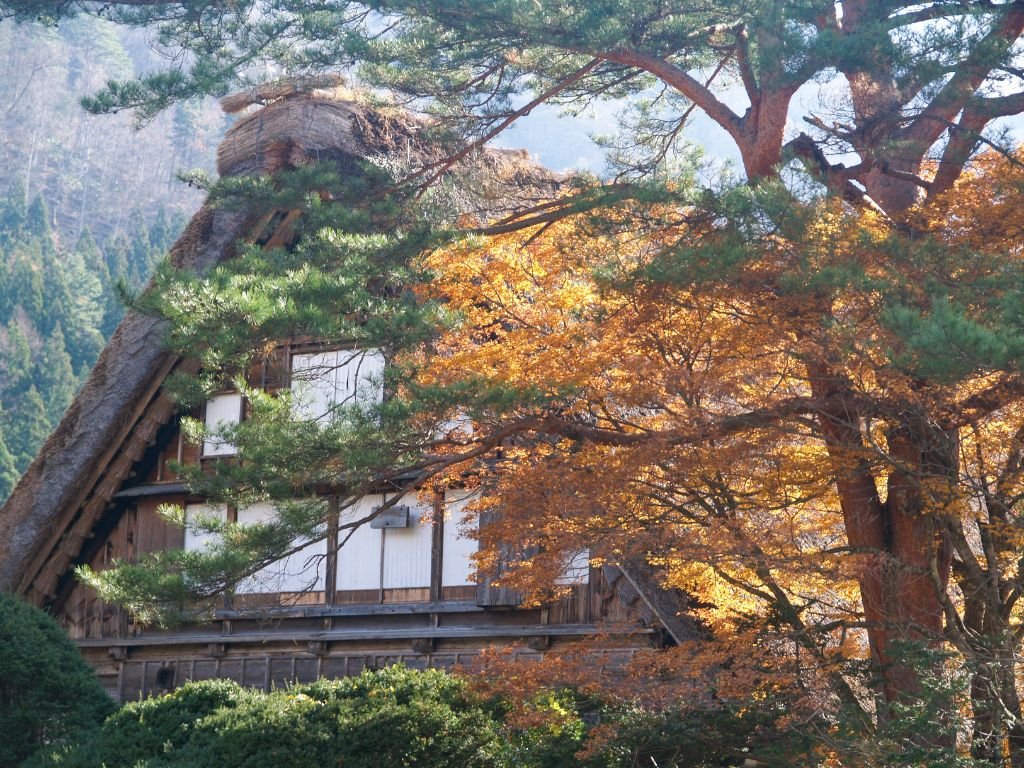

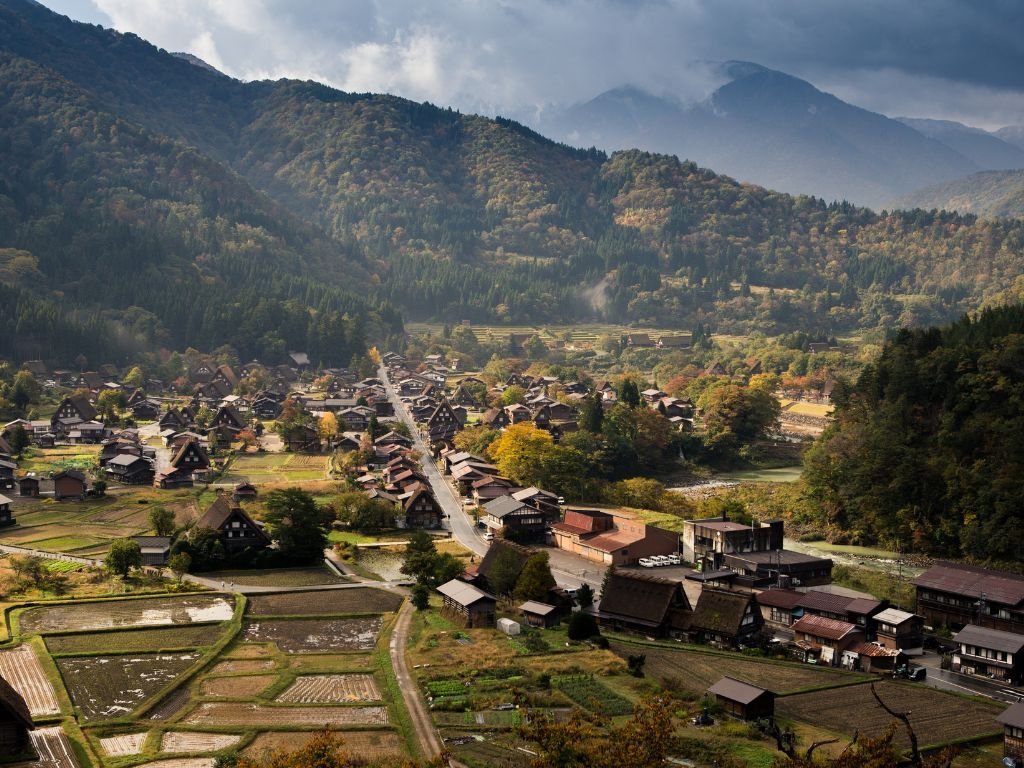

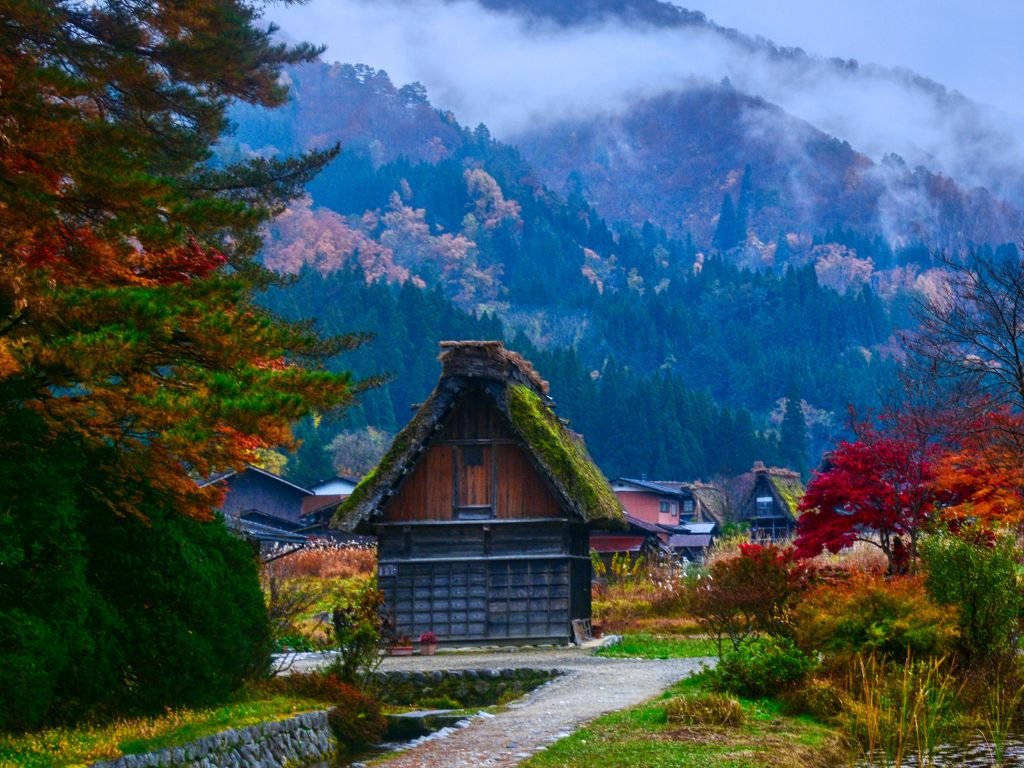
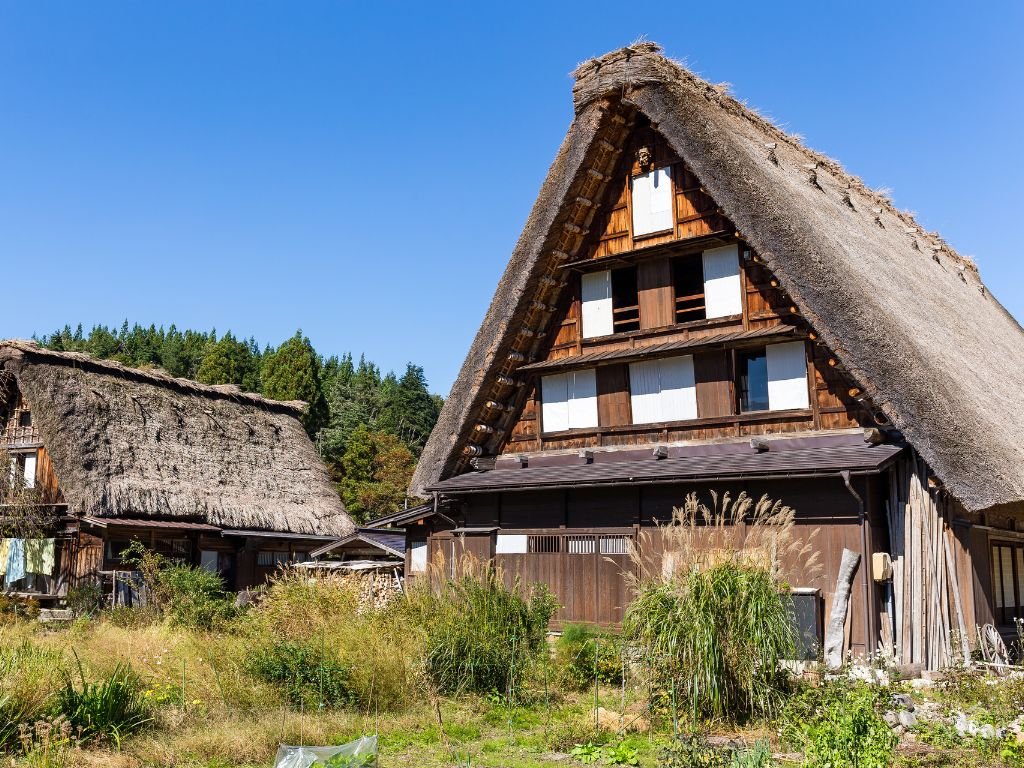
Shirakawa, a town that feels as if it’s straight out of a movie, is perhaps the most intriguing town on this bucket list. The first time I saw this town, my wanderlust surged uncontrollably. Located four hours and thirty minutes away from Tokyo, Shirakawa can be found in the Ono district in Gifu Prefecture.
In this town, we can behold the picture-perfect Gassho-Zuriki-styled Minka homes, unique to Japan and Shirakawa. The architectural style of the houses in Shirakawa was developed as the villagers adapted to their environment.
The climate was the primary factor that led to the development of these unique-looking shelters, distinct from the rest of Japan. These shelters were designed to withstand heavy snowfall, as they are situated in a location that receives the country’s highest snowfall.
The climate, coupled with the mountainous geographical location, has kept the Shirakawa settlement isolated and unexplored until recently. These factors limited the interaction of the villagers with neighboring places, leading the people of Shirakawa to develop their own culture and lifestyle. Interestingly, the culture they developed is now the gem that awaits us in Shirakawa.
More information: Why Visit Shirakawa
In December 1995, Shirakawa was registered as a UNESCO World Heritage Site. On that day, Shirakawa gained the title: “An irreplaceable treasure, either produced naturally by the Earth or through the history of mankind.”
This alone is reason enough to visit Shirakawa. It’s a must-visit place as it exemplifies human adaptability to environmental, social, and economic situations.
Moreover, the simple life in Shirakawago, combined with the scenic mountains around it, can make anyone feel as if they’re in a whole new world, far removed from the chaos of the world. Shirakawa is divided into the Ogi-machi Gassho Style Village and the Southern Nature Area. This means that the awe-inspiring activities don’t stop in the town center but extend to the wilds surrounding it.
Things to do in Shirakawa
While sightseeing is a key part of any visit to Shirakawa, there are several other activities that can enrich your experience in this unique treasure:
- Take a tour of the Wada house, the largest gassho-style house in Shirakawa. Constructed in the 1800s, it has been preserved in its original state, including the garden, fields, and waterways. The second floor, open to the public, is filled with artifacts and items used by the Wada Family, some of which are said to be 300 years old.
- Spend some time reflecting at the Myonzenji Temple. This temple, known for its yew tree and bell tower gate, offers a glimpse into a monk’s residence in Shirakawa.
- Explore the magnificent interiors of a gassho-style house at the Nagase House. This five-story house, with its distinctive large roof and eleven-meter rafter beams, was once the residence of the Nagase family, who were doctors.
- Immerse yourself in the history of Shirakawa Village at the Gasshozukuri Minkaen Outdoor Museum. Here, you can experience life in ancient Japan through the preserved structures, including a watermill, temple, and shrines. The museum grounds also offer a peaceful spot to rest, complete with soba restaurants and shops.
- Discover the sericulture of Shirakawa at the Tajima House. This will give you an idea of how the people of Shirakawa thrived with silk culture as their key industry.
- Take in panoramic views of Shirakawa from the Tenshukaku Castle Keep Observatory. From here, you can behold the fairy tale scenery of the Ogimachi settlement and the backdrop of the mountains.
- For a different perspective, visit the Ogimachi Castle Ruin Observation Area. This medieval mountain fortress in the northwestern part of Shirakawa offers stunning views of the Ogimachi.
- Finally, immerse yourself in the surrounding natural attractions.
- Soak your skin in the mineral-rich warm waters of the Hirase Hot Springs.
- Marvel at the Miboro Dam, the largest in Asia when it was constructed in 1960.
- Enjoy a lakeside stay at the Hakusan Lakeside Lodge and witness the stunning colors of Lake Hakusui.
- Lastly, visit the Shiramizu Waterfall, a spectacular thin waterfall nestled in the forested cliffs of Shirakawa.
Best time to visit Shirakawa
Winter is the ideal time to visit Shirakawa. During this season, the village and houses are blanketed in snow, creating a stunning scene reminiscent of gingerbread houses.
However, if you’re seeking a tranquil and comfortable exploration experience, consider visiting during the shoulder season. This includes late spring or early autumn. During these times, you’ll encounter fewer crowds, and the cost of travel remains relatively low.
Visit Shirakawa for days! Find your perfect stay here.
5. Furano
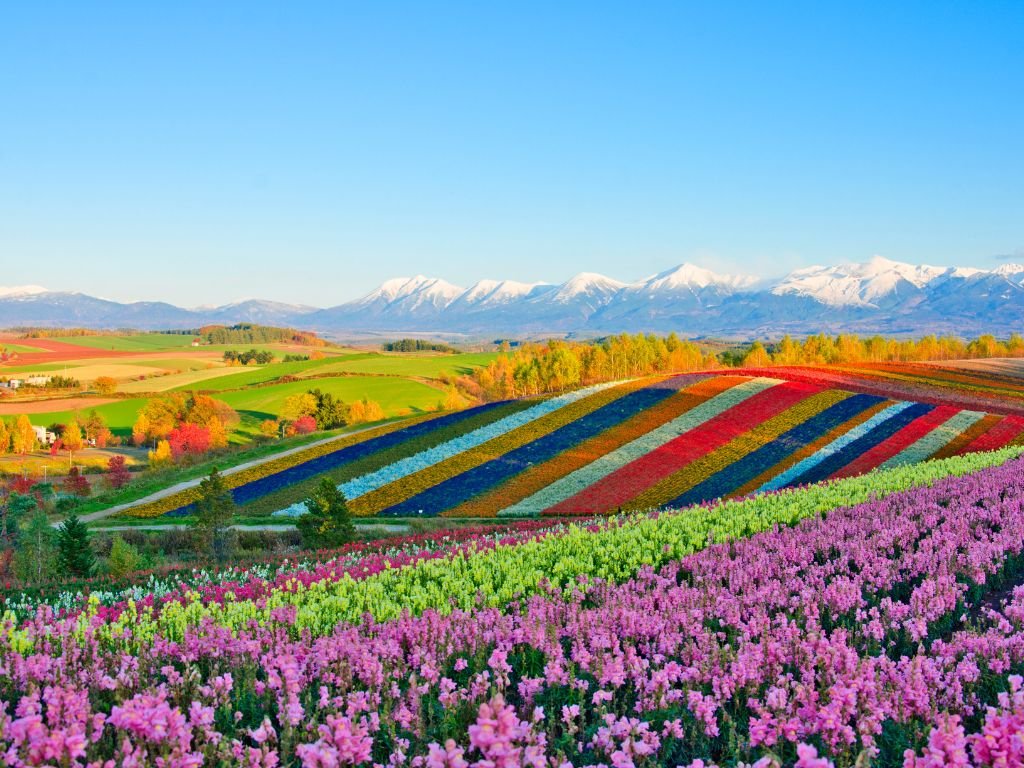
More photos of Furano
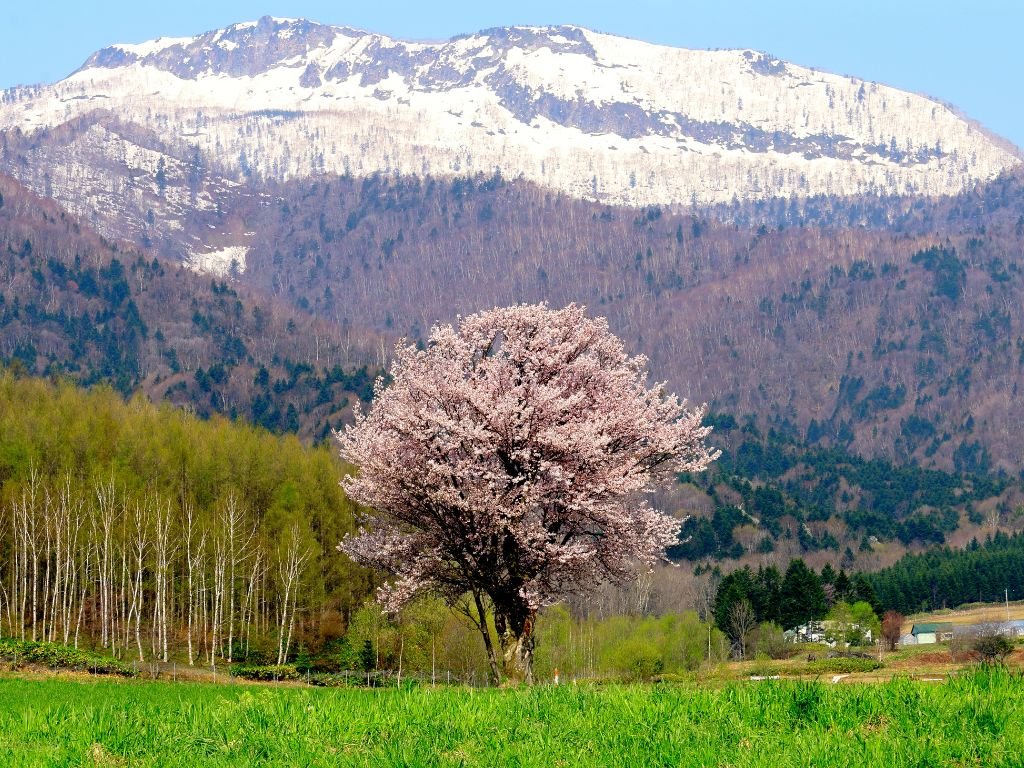
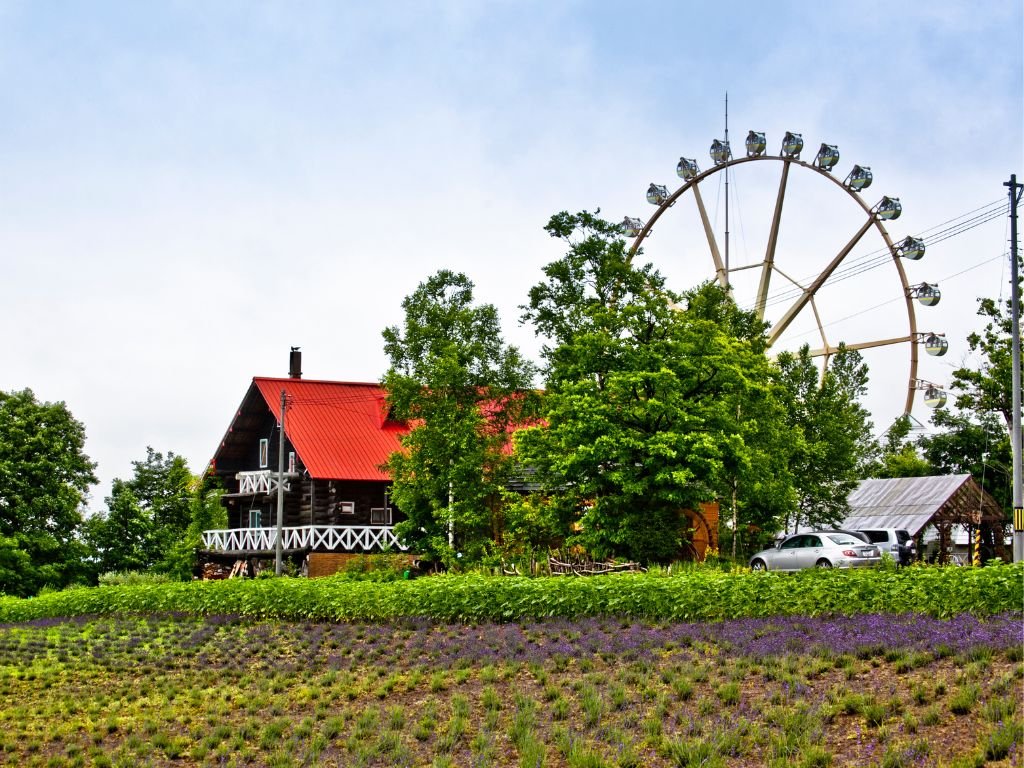
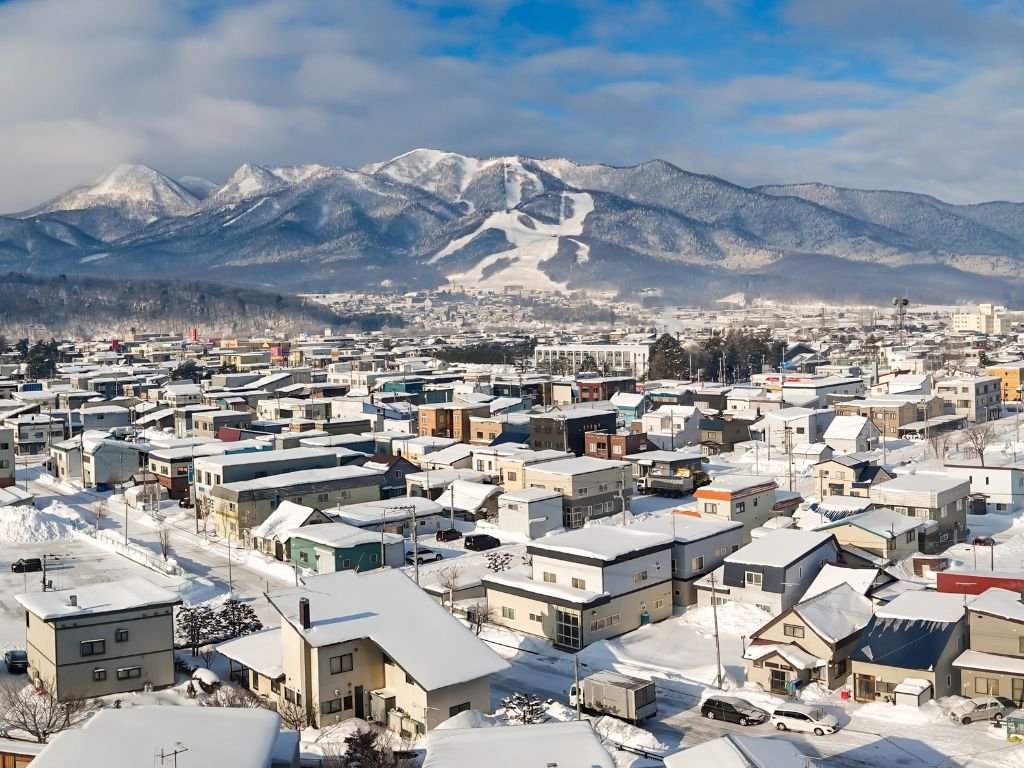
Furano, a town in Hokkaido, is the last destination in my best towns in Japan. It’s approximately an 11-hour and 13-minute train ride from Tokyo. The first time I saw Furano’s colorful flower fields, I was left speechless. It’s a sight that truly takes your breath away.
In addition to its vibrant flora, Furano is also known for its fantastic ski resorts. These resorts often play host to the Snowboarding World Cup. Nestled in the Furano Valley, the town is situated between the Yuubari and Tokachi Volcanic mountain ranges. These mountains lend a photogenic quality to the town, particularly during clear weather.
But there’s more to Furano than just ski resorts and lovely lavender fields. It’s an excellent place to take in scenic views, visit TV drama locations, explore fruit farms, and discover museums. Its proximity to the mountains allows visitors easy access to hiking and other sports.
For wildlife enthusiasts, Furano is a great starting point. In and around the town, you can find unique animals like the Ezo Brown Bear, Ezo Deer, Northern Fox, and Ezo Flying Squirrels.
Furano also offers a plethora of adventurous activities. From harvesting and cooking to rafting, and even hot air balloon rides, there’s no shortage of fun to be had in this charming town.
Things to do in Furano
Here are some activities you can enjoy when you visit Furano:
- Take a ride on the Furano Cable Car. You don’t need to travel to Switzerland to experience a cable car ride with views of beautiful ice-capped mountain ranges.
- Stop by the Rokugo Viewing Platform. Here, you can feast your eyes on a stunning panorama of Furano’s great outdoors.
- Spend some time relaxing in Asahigaoka Park. Especially during the cherry blossom season, this park offers picturesque spots to photograph Mt. Tokachidake framed with blooming cherries.
- Visit the Furano Winery & Furano Wine House. Located on a hilltop amidst fields of flower farms, it’s an excellent spot to catch a view of Mount Tokachidake.
- Explore the Stone House of Goro. This location offers a super Instagrammable scenery that will add beautiful countryside photos of Japan to your social media feed.
- Take a trip to Farm Tomita. Share the vibrant colors of the flowers in Farm Tomita with your social media friends.
- Visit the Choei Lavender Farm & Nakafurano Flower Park. Here, you can marvel at the rainbow-colored fields. You can also take the ski lift to get an overlooking view of the farm.
- Warm up in Fukiage Onsen. Nestled in the middle of the forest on Mount Tokachidake, this gem is open 24 hours a day, allowing you to visit whenever you feel cold.
- Experience a once-in-a-lifetime hot air balloon ride. Float in the air and take in the views of Hokkaido’s ice-capped mountains.
- Join the Flying Dolphins Adventure Service for a rafting adventure. It’s a perfect way to maximize your stay in Furano. Don’t just sightsee; get active and have some fun!
- Try trekking with a horse or dogsled. This fantastic and adventurous activity awaits you in Furano.
- Finally, embrace the wind with paragliding. Let a qualified paragliding instructor fly you above the heart of Hokkaido. It’s an experience filled with awe and thrill.
Best time to visit Furano
If you’re planning a trip to Furano or Hokkaido specifically to see the flower fields, the optimal time to visit is in the early morning during mid to late July. This is when the flowers are at their peak, fully bloomed and displaying their vibrant colors.
That being said, Furano is a beautiful destination that offers a plethora of activities throughout the year. So, regardless of the season, a visit to Furano should be a delightful experience.
Visiting Furano for several days? Here’s where you can find great hotel deals.
Save it on Pinterest.
